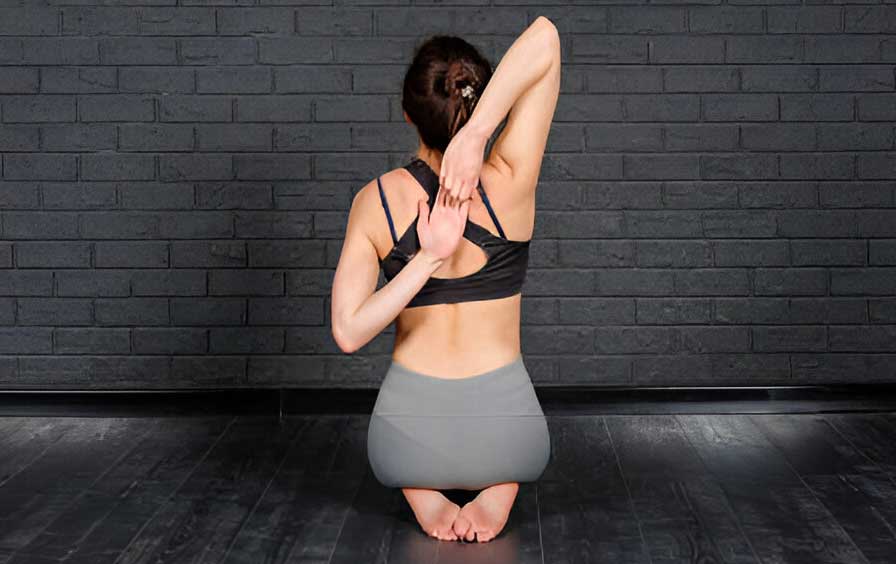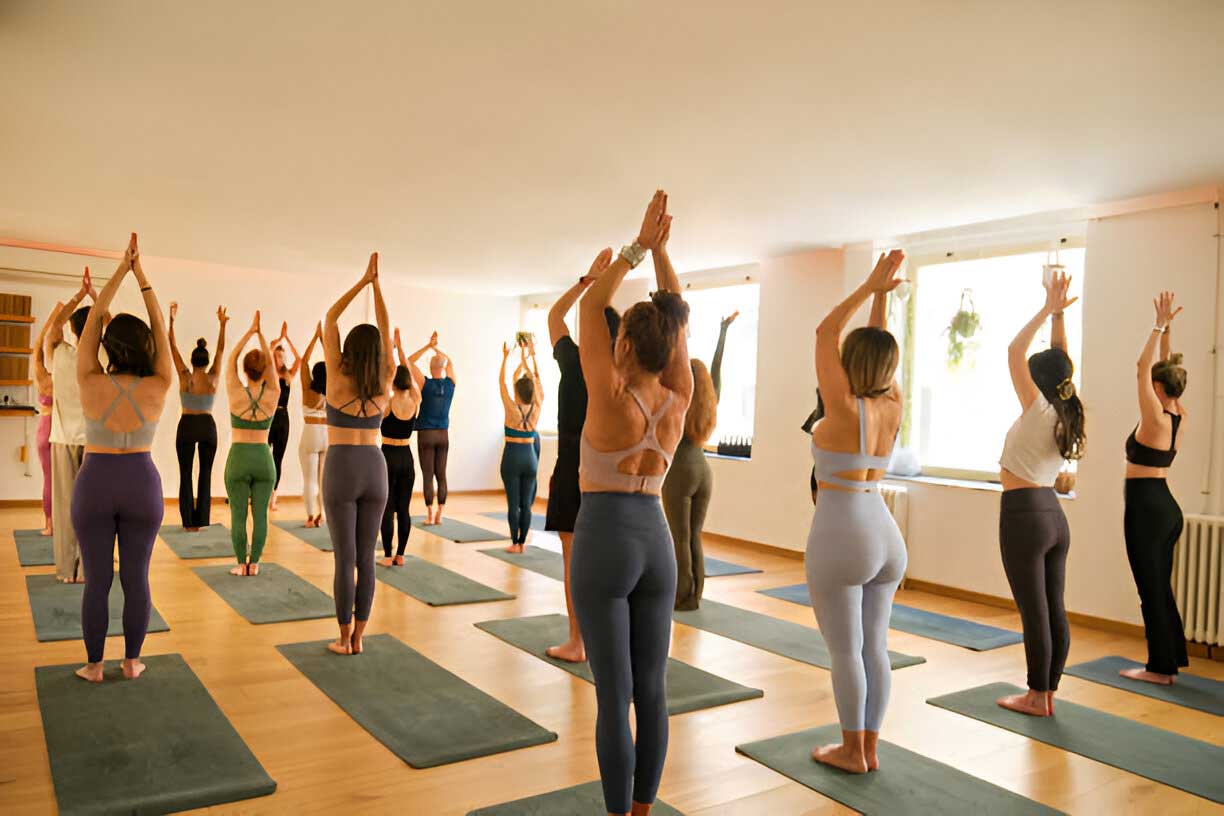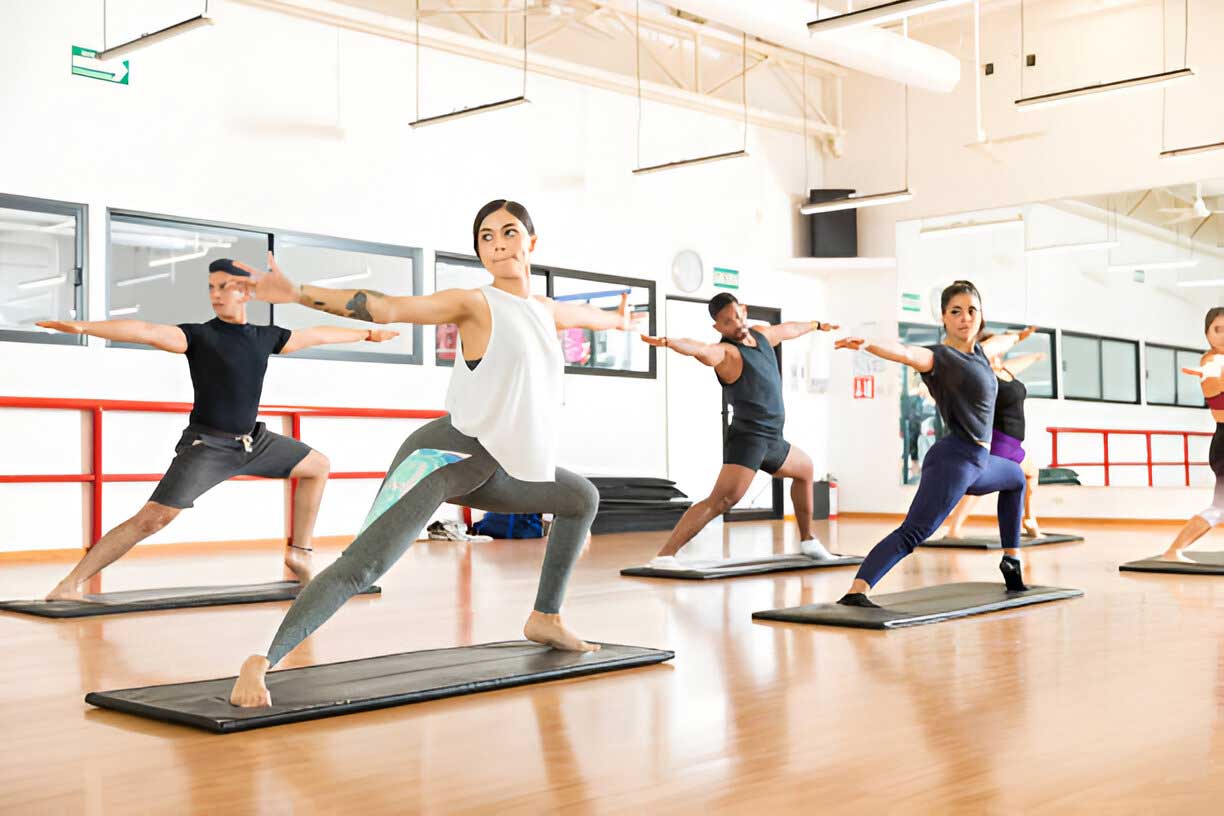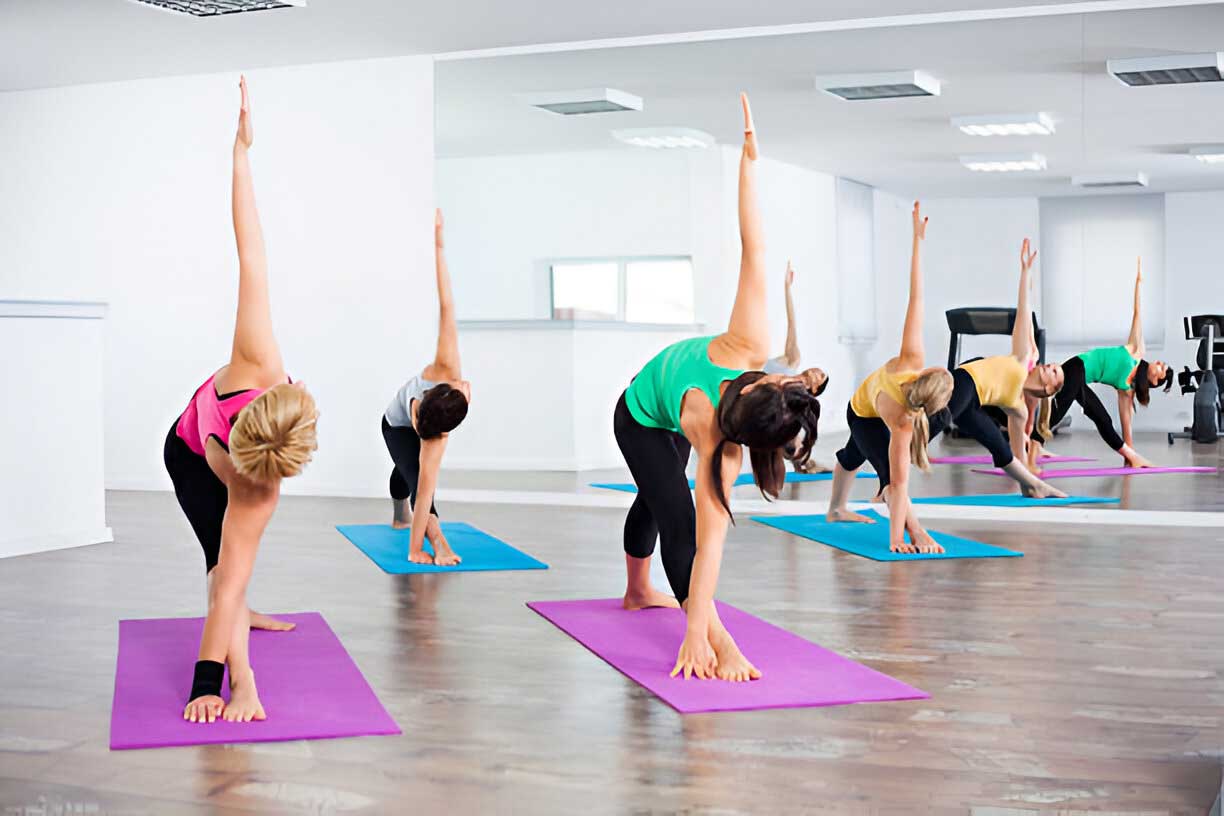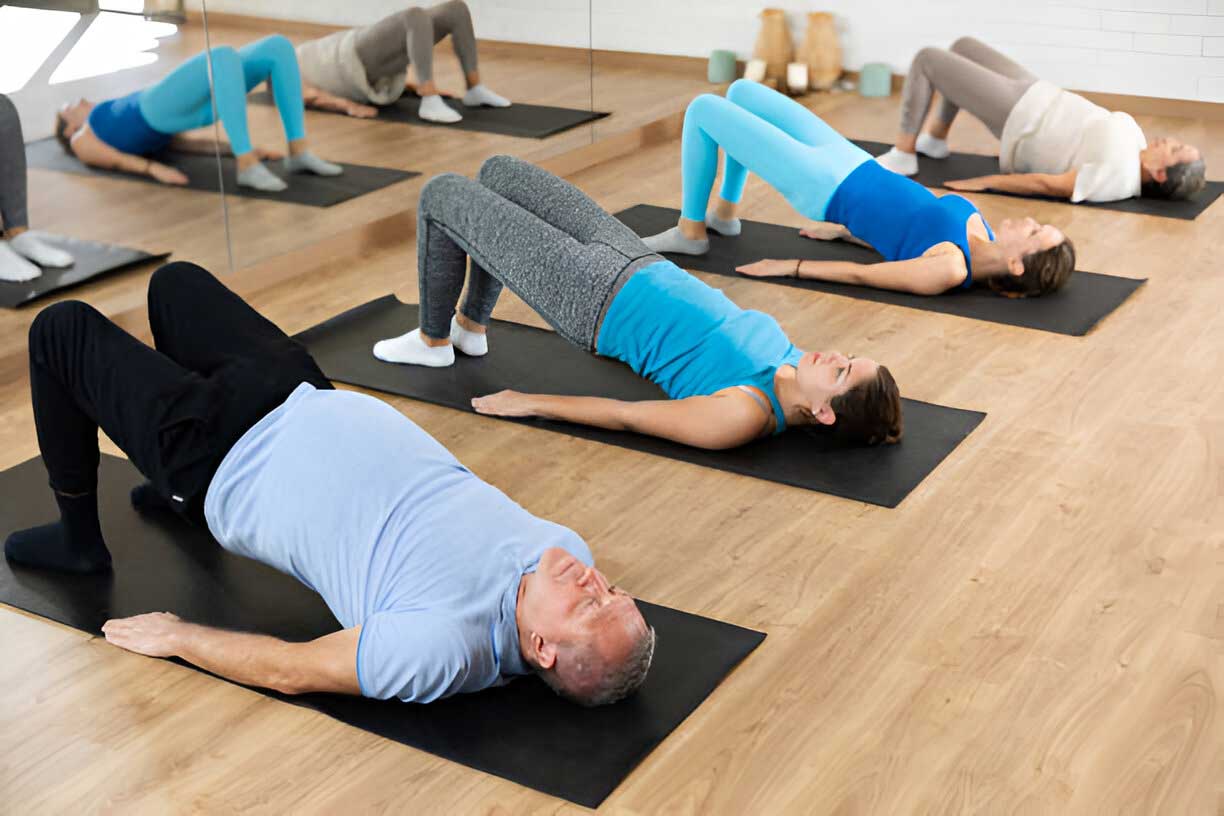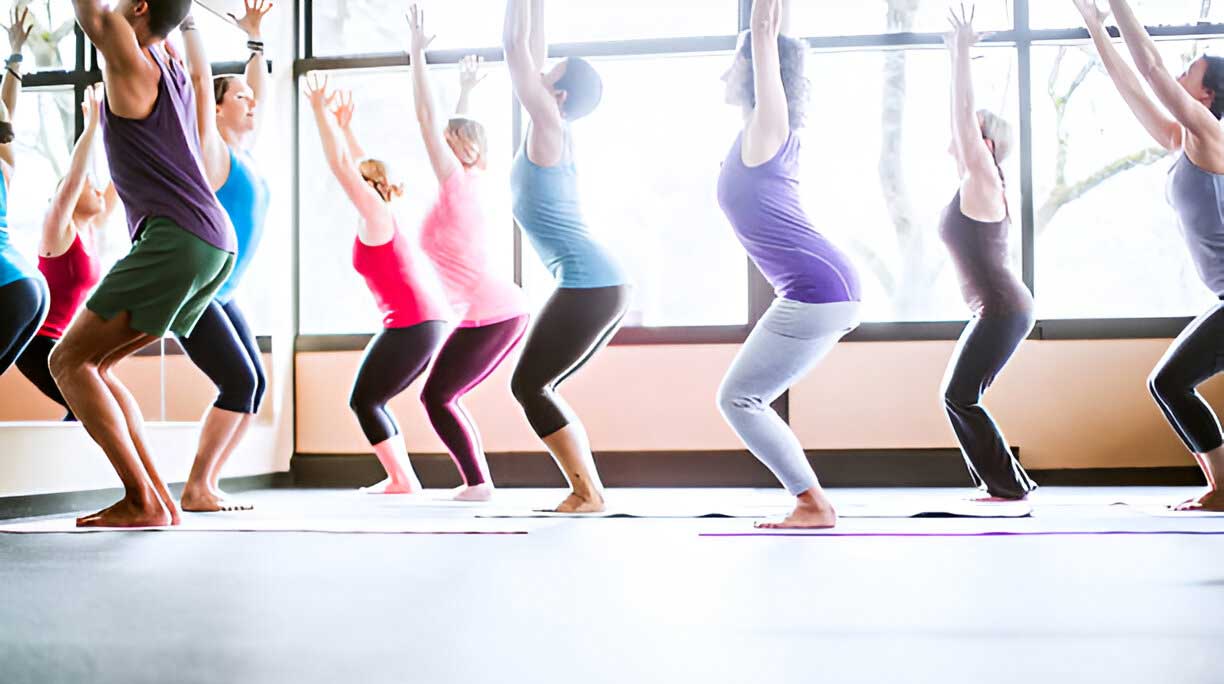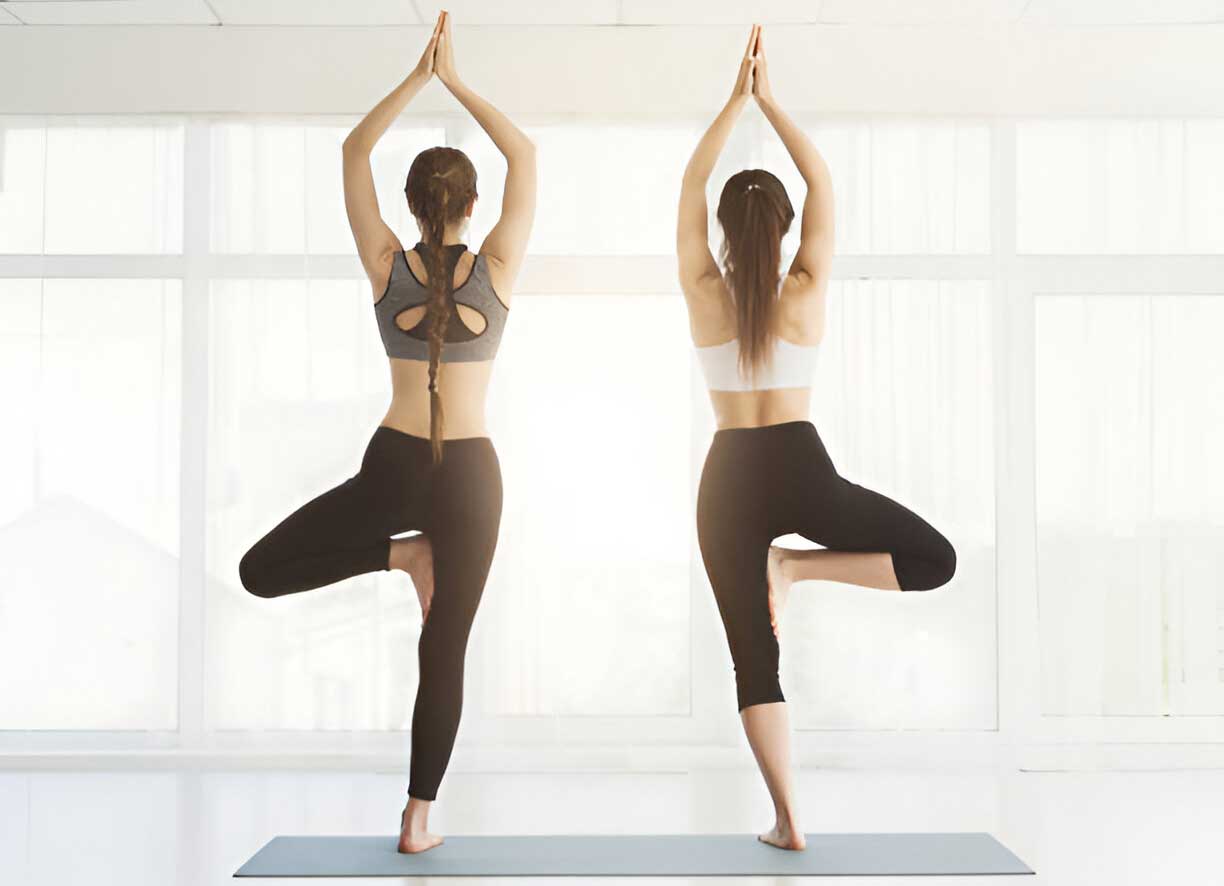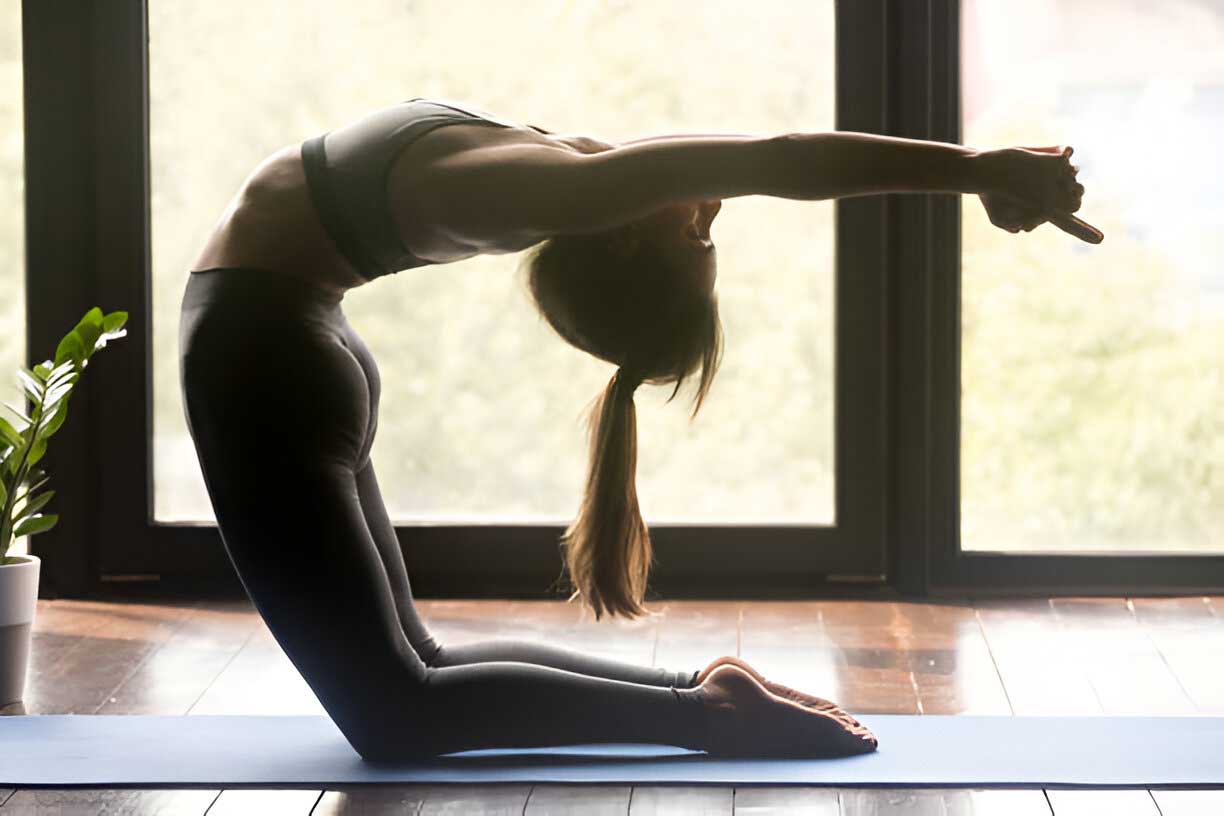How Does Yoga Benefit the Skeletal System?
The skeletal system is the structural framework of the body, composed of bones, joints, and cartilage. It provides support, protects internal organs, and facilitates movement. Maintaining a healthy skeletal system is crucial for overall well-being. Yoga, an ancient practice that combines physical postures, breath control, and meditation, offers significant benefits for the skeletal system. This article explores how yoga benefits the skeletal system and provides possible treatment options to complement your yoga practice.
The Connection Between Yoga and the Skeletal System
Yoga benefits the skeletal system through various mechanisms that involve both physical and mental aspects of health. These mechanisms include:
- Improving Bone Density: Weight-bearing yoga postures help increase bone density by stimulating bone growth. This is especially important for preventing osteoporosis, a condition characterized by weak and brittle bones.
- Enhancing Flexibility: Yoga increases flexibility by stretching and lengthening the muscles, tendons, and ligaments that support the bones and joints. Improved flexibility reduces the risk of injuries and enhances overall mobility.
- Strengthening Muscles: Yoga strengthens the muscles that support the bones, improving posture and reducing the risk of musculoskeletal issues such as back pain and joint strain.
- Promoting Joint Health: Yoga promotes joint health by lubricating the joints and improving their range of motion. This helps prevent joint stiffness and conditions such as arthritis.
- Aligning the Spine: Proper spinal alignment is essential for a healthy skeletal system. Yoga helps align the spine by strengthening the core muscles and improving posture, reducing the risk of spinal issues such as scoliosis and kyphosis.
Yoga Poses That Benefit the Skeletal System
Certain yoga poses, known as asanas, are particularly effective for supporting the skeletal system. These poses target different aspects of bone and joint health, including strength, flexibility, and alignment. Here are some of the most effective yoga poses for enhancing skeletal system function:
1. Mountain Pose (Tadasana)
Mountain Pose is a foundational yoga posture that helps improve posture, align the spine, and strengthen the bones in the legs and feet. This pose is particularly beneficial for promoting overall skeletal health.
How to Perform:
- Stand with your feet hip-width apart and your arms by your sides.
- Distribute your weight evenly across both feet, engaging your thighs and lifting your kneecaps.
- Lengthen your spine, reaching the crown of your head toward the ceiling.
- Hold this pose for 1-2 minutes, breathing deeply and focusing on your alignment.
Benefits:
- Improves posture and spinal alignment
- Strengthens the bones in the legs and feet
- Promotes overall skeletal health
2. Warrior II Pose (Virabhadrasana II)
Warrior II Pose is a powerful yoga posture that strengthens the legs, hips, and arms. This pose helps increase bone density and improve joint stability, making it ideal for supporting the skeletal system.
How to Perform:
- Stand with your feet wide apart, turning your right foot out 90 degrees and your left foot slightly in.
- Extend your arms parallel to the floor, palms facing down.
- Bend your right knee over your right ankle, keeping your left leg straight.
- Hold this pose for 30 seconds to 1 minute, then switch sides.
Benefits:
- Strengthens the bones in the legs, hips, and arms
- Increases bone density and joint stability
- Supports overall skeletal health
3. Triangle Pose (Trikonasana)
Triangle Pose is a standing yoga posture that stretches and strengthens the entire body, including the spine, legs, and hips. This pose helps improve flexibility and alignment, supporting the skeletal system.
How to Perform:
- Stand with your feet wide apart, turning your right foot out 90 degrees and your left foot slightly in.
- Extend your arms parallel to the floor, palms facing down.
- Inhale and reach your right hand forward, then lower it to your shin or the floor.
- Extend your left arm toward the ceiling and hold this pose for 1-2 minutes, then switch sides.
Benefits:
- Stretches and strengthens the spine, legs, and hips
- Improves flexibility and alignment
- Supports bone and joint health
4. Bridge Pose (Setu Bandhasana)
Bridge Pose is an effective yoga exercise for strengthening the spine, hips, and legs. This pose helps improve bone density, align the spine, and promote joint health.
How to Perform:
- Lie on your back with your knees bent and feet flat on the floor, hip-width apart.
- Place your arms alongside your body, palms facing down.
- Inhale and lift your hips toward the ceiling, pressing your feet and arms into the floor.
- Hold this pose for 30 seconds to 1 minute, then slowly lower your hips back to the floor.
Benefits:
- Strengthens the spine, hips, and legs
- Improves bone density and spinal alignment
- Promotes joint health
5. Chair Pose (Utkatasana)
Chair Pose is a weight-bearing yoga posture that strengthens the legs, hips, and spine. This pose helps increase bone density, improve posture, and support the skeletal system.
How to Perform:
- Stand with your feet together and your arms by your sides.
- Inhale and raise your arms overhead, palms facing each other.
- Exhale and bend your knees, lowering your hips as if sitting in a chair.
- Hold this pose for 30 seconds to 1 minute, breathing deeply and focusing on your alignment.
Benefits:
- Strengthens the legs, hips, and spine
- Increases bone density and joint stability
- Supports overall skeletal health
6. Cobra Pose (Bhujangasana)
Cobra Pose is a gentle backbend that strengthens the spine and opens the chest. This pose helps improve spinal alignment, increase flexibility, and support the skeletal system.
How to Perform:
- Lie face down on the mat with your legs extended and feet together.
- Place your hands under your shoulders, elbows close to your body.
- Inhale and lift your chest off the mat, keeping your lower ribs on the floor.
- Hold this pose for 15-30 seconds, then slowly lower yourself back down.
Benefits:
- Strengthens the spine and core muscles
- Improves spinal alignment and flexibility
- Supports overall skeletal health
7. Tree Pose (Vrksasana)
Tree Pose is a balancing yoga posture that strengthens the bones in the legs, hips, and spine. This pose helps improve balance, coordination, and bone density, supporting the skeletal system.
How to Perform:
- Stand with your feet hip-width apart and your arms by your sides.
- Shift your weight onto your right foot and place your left foot on your right inner thigh or calf.
- Bring your hands together in prayer position at your chest.
- Hold this pose for 30 seconds to 1 minute, then switch sides.
Benefits:
- Strengthens the bones in the legs, hips, and spine
- Improves balance, coordination, and bone density
- Supports overall skeletal health
The Role of Pranayama in Skeletal System Health
Breath control, or pranayama, is an integral part of yoga that supports skeletal system health by improving circulation, oxygenation, and overall well-being. Practicing pranayama regularly can enhance the body’s ability to deliver oxygen and nutrients to the bones, joints, and muscles.
Effective Pranayama Techniques for Skeletal System Health:
- Nadi Shodhana (Alternate Nostril Breathing): This technique balances the body’s energy channels, improves circulation, and supports overall well-being.
- Ujjayi (Ocean Breath): This technique involves slow, deep breathing with a slight constriction of the throat, creating a soothing sound that calms the mind and body.
- Bhastrika (Bellows Breath): This vigorous breathing technique increases lung capacity, stimulates circulation, and enhances oxygenation of the skeletal system.
How to Perform Pranayama:
- Nadi Shodhana: Sit comfortably and close your right nostril with your thumb. Inhale deeply through your left nostril, then close it with your ring finger. Exhale through your right nostril. Continue alternating nostrils for 5-10 minutes.
- Ujjayi: Sit comfortably and take a deep breath in through your nose. Exhale slowly through your nose while slightly constricting your throat to create a soft, ocean-like sound. Continue this deep, rhythmic breathing for 5-10 minutes.
- Bhastrika: Sit comfortably and take a deep breath. Inhale and exhale forcefully through both nostrils, using your diaphragm to create a rhythmic, bellows-like motion. Continue for 1-2 minutes.
Meditation and Skeletal System Health
Meditation is another crucial aspect of yoga that benefits the skeletal system. Regular meditation practice helps reduce stress, improve mental clarity, and promote emotional balance. A calm and balanced mind supports skeletal system health by reducing the production of stress hormones that can weaken bones and joints over time.
Meditation Techniques for Skeletal System Health:
- Mindfulness Meditation: Focus on your breath and observe your thoughts without judgment. Practice this for 10-15 minutes daily to reduce stress and support skeletal health.
- Loving-Kindness Meditation: Focus on sending positive thoughts and intentions to yourself and others. This practice promotes emotional balance and enhances overall well-being, supporting skeletal health.
- Guided Imagery: Visualize strong, healthy bones and joints as you breathe deeply and relax. This technique enhances the mind-body connection and supports skeletal health by promoting relaxation and reducing stress.
Diet and Skeletal System Health
While yoga offers significant benefits for the skeletal system, its effects can be enhanced by a balanced, nutrient-rich diet. Consuming foods high in vitamins, minerals, and antioxidants supports bone and joint health and helps the body maintain strong, healthy bones.
Foods to Include:
- Calcium-Rich Foods: Dairy products, leafy greens, and fortified plant-based milk are rich in calcium, which is essential for strong bones.
- Vitamin D: Found in fatty fish, egg yolks, and fortified foods, vitamin D helps the body absorb calcium and supports bone health.
- Magnesium: Nuts, seeds, and whole grains are rich in magnesium, which helps maintain bone density and supports skeletal health.
- Omega-3 Fatty Acids: Found in fish, flaxseeds, and walnuts, omega-3s support joint health and reduce inflammation.
Foods to Avoid:
- Processed Foods: High in sugar and unhealthy fats, which can weaken bones and joints.
- Caffeine: Excessive consumption can interfere with calcium absorption and weaken bones.
- Sugary Foods: High sugar intake can lead to bone loss and affect skeletal health.
Possible Treatment Options to Support Skeletal System Health
In addition to yoga, other treatments can support skeletal system health and enhance overall well-being. These treatments can be integrated into a comprehensive wellness routine to optimize skeletal health.
1. Weight-Bearing Exercise
Weight-bearing exercises, such as walking, jogging, and resistance training, help increase bone density and strengthen the muscles that support the skeletal system. These exercises complement yoga by providing additional support for bone and joint health.
Benefits:
- Increases bone density and muscle strength
- Supports overall skeletal health
- Reduces the risk of osteoporosis and fractures
2. Massage Therapy
Massage therapy promotes relaxation, reduces stress, and stimulates circulation. Regular massage therapy can support skeletal system health by improving flexibility, reducing muscle tension, and enhancing overall well-being.
Benefits:
- Reduces stress and anxiety
- Improves circulation and flexibility
- Supports skeletal health by reducing muscle tension
3. Herbal Supplements
Certain herbal supplements can support skeletal system health by providing essential nutrients and promoting overall well-being. These supplements are often used in conjunction with a balanced diet and regular yoga practice to enhance bone and joint health.
Common Skeletal System-Supporting Supplements:
- Calcium: Essential for maintaining strong bones and teeth.
- Vitamin D: Supports calcium absorption and bone health.
- Magnesium: Helps maintain bone density and supports overall skeletal health.
- Turmeric: Contains curcumin, a compound with powerful anti-inflammatory properties that support joint health.
Consult a healthcare provider before starting any supplement regimen.
4. Physical Therapy
Physical therapy involves targeted exercises and stretches to strengthen the muscles that support the bones and joints. A physical therapist can work with you to create a personalized exercise program that complements your yoga practice.
Benefits:
- Strengthens the muscles that support the bones and joints
- Improves flexibility and range of motion
- Reduces pain and enhances recovery
Incorporating Yoga into a Skeletal System-Supporting Routine
To maximize the benefits of yoga for skeletal system health, it’s important to incorporate it into a well-rounded wellness routine. This routine should include regular yoga practice, a balanced diet, adequate hydration, and possibly additional treatments like weight-bearing exercise or massage therapy.
Sample Daily Skeletal System-Supporting Routine:
- Morning:
- Start with a glass of warm lemon water to stimulate digestion and support bone health.
- Practice a gentle yoga routine, focusing on poses that enhance strength, flexibility, and alignment.
- Eat a nutrient-rich breakfast, such as a smoothie with leafy greens, berries, and nuts.
- Afternoon:
- Incorporate weight-bearing exercise, such as walking or resistance training, to support bone density and joint health.
- Enjoy a lunch rich in calcium and vitamin D, such as a salad with leafy greens and fortified plant-based milk.
- Stay hydrated by drinking water or herbal teas.
- Evening:
- Practice a restorative yoga routine, focusing on poses that promote relaxation and stress relief.
- Enjoy a light dinner, avoiding processed foods and excessive sugar.
- Consider taking a bone-supporting supplement, if recommended by a healthcare provider.
- Bedtime:
- Perform a short meditation or mindfulness practice to reduce stress and promote relaxation.
- Get adequate sleep, as the body’s skeletal system functions most effectively during rest.
Conclusion
Yoga offers a natural and effective way to support the skeletal system, offering a holistic approach that enhances physical, mental, and emotional well-being. Through specific poses, breath control, and meditation, yoga supports the body’s skeletal health by promoting better alignment, bone density, and flexibility. When combined with a balanced diet, proper hydration, and additional treatments like weight-bearing exercise or massage therapy, yoga can play a central role in maintaining optimal skeletal health.
Whether you’re looking to strengthen your bones, improve your overall skeletal health, or reduce stress, incorporating yoga into your daily routine can provide lasting benefits. With consistent practice and a mindful approach, yoga can become a powerful tool in your journey toward a healthier, more resilient skeletal system.

